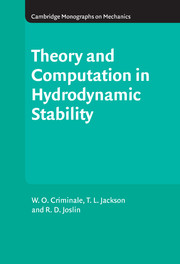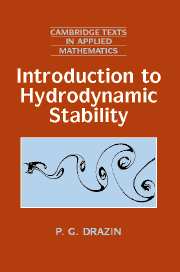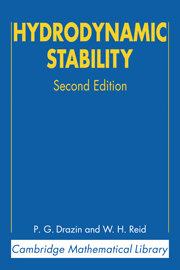Theory and Computation of Hydrodynamic Stability
The study of hydrodynamic stability is fundamental to many subjects, ranging from geophysics and meteorology through to engineering design. This treatise covers both classical and modern aspects of the subject, systematically developing it from the simplest physical problems, then progressing chapter by chapter to the most complex, considering linear and nonlinear situations, and analysing temporal and spatial stability. The authors examine each problem both analytically and numerically: many chapters end with an appendix outlining relevant numerical techniques. All relevant fluid flows are treated, including those where the fluid may be compressible, or those from geophysics, or those that require salient geometries for description. Details of initial-value problems are explored equally with those of stability. As a result, the early transient period as well as the asymptotic fate for perturbations for a flow can be assessed. The text is enriched with many exercises, copious illustrations and an extensive bibliography and the result is a book that can be used with courses on hydrodynamic stability or as an authoritative reference for researchers.
- Fully up-to-date, covering classical and modern, linear and nonlinear aspects, from both numerical and analytic views
- Systematic presentation, progressing from simple to complicated, with exercises and computer code for each chapter, making book suitable for advanced courses
- All physical problems of note are investigated: confined shear flows; boundary layers; free flow; geophysical flows. Flow control and optimization are exploited.
Reviews & endorsements
'… overall I am very impressed with this text. It provides a comprehensive account of modern stability theory … I have no doubt that in time it will be acknowledged as a valuable resource to both graduate students and established researchers alike.' Geophysical and Astrophysical Fluid Dynamics
'The book is certainly a welcome addition to the literature of hydrodynamic stability. It can also be used very well for teaching. This purpose is further assisted by the exercises provided at the end of each chapter. Over 450 references guide the way to even more detailed information.' ZAMM - Z. Angew. Math. Mech.
'… the exercises at the end of each chapter are very well thought out and informative. … the authors have achieved their aims in setting out in a very coherent manner a thorough explanation of the up-to-date theory of hydrodynamic stability. The book will be of much interest to all postgraduate researchers in fluid dynamics and is an excellent reference text.' Contemporary Physics
'… this book will without doubt acquire a high reputation as a detailed introduction to its subject and as a reference work.' Monatshefte für Mathematik
Product details
No date availableAdobe eBook Reader
9780511891458
0 pages
0kg
123 b/w illus. 4 colour illus. 17 tables 60 exercises
Table of Contents
- 1. Introduction and problem formulation
- 2. Temporal stability of inviscid incompressible flows
- 3. Temporal stability of viscous incompressible flows
- 4. Spatial stability of incompressible flows
- 5. Stability of compressible flows
- 6. Centrifugal stability
- 7. Geophysical flow
- 8. Transient dynamics
- 9. Nonlinear stability
- 10. Transition and receptivity
- 11. Direct numerical simulation
- 12. Flow control and optimization
- 13. Investigating hydrodynamic instabilities with experiments
- Bibliography
- Index.








